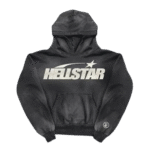In the world of international trade, understanding tariff codes is essential for businesses that import or export goods to and from Canada. Tariff code lookup in Canada helps determine the applicable duties, taxes, and regulations for every product, ensuring compliance with Canadian customs requirements. With the right knowledge, businesses can avoid delays, fines, and costly errors while optimizing their supply chain operations.
What are Tariff Codes?
Tariff codes, also referred to as Harmonized System (HS) codes or Customs Tariff numbers, are standardized numerical identifiers used worldwide to classify traded goods. Each code corresponds to a specific category of products based on its material, function, and composition. In Canada, tariff codes play a critical role in the Canada Customs Tariff, guiding customs authorities in assessing duties and ensuring proper regulatory compliance.
Tariff codes are usually 8 to 10 digits in Canada, extending the 6-digit international HS code for national purposes. Accurate classification using tariff codes ensures proper duty calculation and prevents legal issues or shipment delays.
Importance of Tariff Code Lookup in Canada
- Duty and Tax Calculation
Using the correct tariff code ensures that importers pay the right amount of customs duty and taxes. Misclassification may lead to overpayment, underpayment, or even penalties, affecting profitability. - Regulatory Compliance
Certain products may require licenses, permits, or certifications before being imported. A tariff code lookup helps identify any such requirements and ensures compliance with Canadian regulations. - Smooth Customs Clearance
Properly classified goods with accurate tariff codes reduce the risk of shipment delays or rejection at Canadian customs. Efficient clearance processes save time and money. - Market and Trade Insights
Tariff codes are used for trade statistics, helping businesses track imports, analyze market trends, and make informed decisions.
How to Perform a Tariff Code Lookup in Canada
Canada provides several official tools for identifying the correct tariff code for your products. Here’s a step-by-step guide:
- Identify Your Product
Clearly define the product’s material, purpose, and function. Accurate product details are essential for selecting the correct tariff code. - Access the Canada Tariff Database
Visit the official or the Canada Border Services Agency (CBSA) website. These tools allow users to search for tariff codes using product descriptions or keywords. - Use Descriptive Keywords
Input precise keywords describing the product, such as “stainless steel cookware” or “organic skincare cream.” This helps narrow down the list of potential tariff codes. - Review Suggested Codes
Examine the recommended codes and select the one that matches your product. Pay attention to subheadings, as they can affect duties and regulations. - Check National Additions
Canada often adds extra digits to the standard HS code for national classification. Verify the full tariff code for accurate duty and regulatory application.
Tips for Accurate Tariff Code Lookup
- Rely on Official Sources – Always use the CBSA and Canada Tariff Finder for accurate classification.
- Maintain Product Documentation – Keep detailed records of product specifications, materials, and intended use.
- Seek Expert Advice – Customs brokers and trade consultants can help with complex or ambiguous products.
- Stay Updated – Tariff codes may change periodically, so regularly check for updates in the Canada Customs Tariff.
Benefits of Using Tariff Code Lookup
- Cost Efficiency – Avoid unnecessary duties or fines through proper classification.
- Faster Shipments – Accurate codes lead to smoother customs clearance.
- Regulatory Confidence – Ensure compliance with Canadian trade regulations.
- Business Insights – Use data from tariff codes for market research and strategic planning.
Conclusion
Performing a tariff code lookup in Canada is an indispensable practice for businesses engaged in international trade. Properly identifying tariff codes ensures compliance with customs regulations, accurate duty and tax payments, and faster clearance of shipments. By utilizing official tools, maintaining detailed product records, and consulting experts when necessary, businesses can confidently navigate the complexities of Canadian import and export regulations.
Ultimately, mastering tariff code lookup not only safeguards your business against penalties and delays but also empowers you with the knowledge to optimize trade operations and strengthen your position in the global market.

